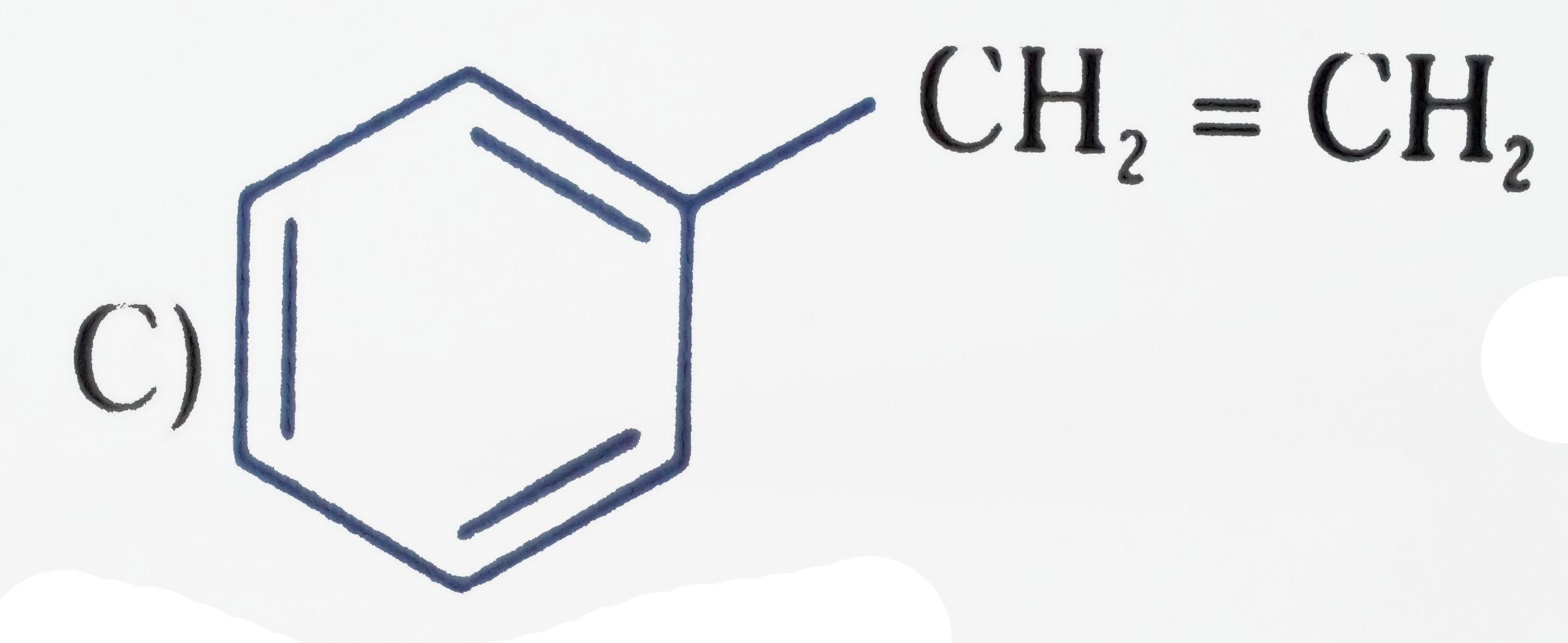An optically active compound, having molecular formula C6H12O6 is found in two isomeric forms. When isomers dissolved in water, they show the following equilibria
[A]α=111n⇔equilibrium mixture52.5∘⇔[B]19.2
Such isomers are called
Anomers
Enantiomers
Positional isomers
Geometrical isomers
The correct Answer is:A
To solve the problem, we need to analyze the information provided about the optically active compound with the molecular formula C6H12O6 and its isomeric forms.
1. Identify the Compound: The molecular formula C6H12O6 corresponds to a carbohydrate, specifically a hexose sugar. The most common hexose sugars are glucose, fructose, and galactose.
2. Determine the Isomeric Forms: The problem states that there are two isomeric forms of the compound. Given the context of carbohydrates, these isomers are likely to be different anomers of glucose, which are alpha (α) and beta (β) forms.
3. Understand Optical Activity: The optical activity of a compound refers to its ability to rotate plane-polarized light. The degree of rotation is given for each form:
- Compound A has a rotation of +111∘ (α-D-glucose).
- The equilibrium mixture has a rotation of +52.5∘.
- Compound B has a rotation of +19.2∘ (β-D-glucose).
4. Establish the Equilibrium: The equilibrium between the two forms indicates that when dissolved in water, α-D-glucose and β-D-glucose can interconvert. The equilibrium mixture's rotation indicates the presence of both forms in a specific ratio.
5. Identify the Type of Isomers: The isomers in question, α-D-glucose and β-D-glucose, differ only in the configuration around the anomeric carbon (C1). Therefore, they are classified as anomers.
6. Conclusion: The isomers are called anomers. Anomers are a type of stereoisomer that differ at the anomeric carbon, which is the carbon that becomes a new chiral center when a sugar cyclizes.
Final Answer:
The isomers are called anomers.
- Compound A has a rotation of +111∘ (α-D-glucose).
- The equilibrium mixture has a rotation of +52.5∘.
- Compound B has a rotation of +19.2∘ (β-D-glucose).
The isomers are called anomers.
Topper's Solved these Questions
- BIOMOLECULESBOOK - AAKASH INSTITUTECHAPTER - BIOMOLECULESEXERCISE - EXERCISE (ASSIGNMENT) SECTION - C Previous Years Questions
25 Videos
- BIOMOLECULESBOOK - AAKASH INSTITUTECHAPTER - BIOMOLECULESEXERCISE - EXERCISE (ASSIGNMENT) SECTION - C Previous Years Questions (Questions asked Prior to Medical Ent. Exams. 2005
33 Videos
- BIOMOLECULESBOOK - AAKASH INSTITUTECHAPTER - BIOMOLECULESEXERCISE - EXERCISE (ASSIGNMENT) SECTION - A Objective Type Questions
50 Videos
- AMINES BOOK - AAKASH INSTITUTECHAPTER - AMINES EXERCISE - Assignment Section -J (Aakash Challengers Questions)
9 Videos
- CHEMICAL BONDING AND MOLECULAR STRUCTURE BOOK - AAKASH INSTITUTECHAPTER - CHEMICAL BONDING AND MOLECULAR STRUCTURE EXERCISE - Assignment Section J (Aakash Challengers Questions)
10 Videos
Similar Questions
An optically active compound having molecular formula C6H12O6 is found in two isomeric forms [A] and [B] in nature. When [A] and [B] are dissolved in water, they show the following equilibrium.
[A]⇐⇒equilibrium mixture⇐⇒B[α]D=111∘ 52.2∘19.2∘
(i) What are such isomers called ?
(ii) Can they be called enantiomers ? Justify your answer.
(iii) Draw the cyclic structure of anomer [A].

View SolutionAn optically active compound having molecular formula C6H12O6 is found in two isomeric forms [A] and [B] in nature. When [A] and [B] are dissolved in water, they show the following equilibrium.
[A]⇐⇒equilibrium mixture⇐⇒B[α]D=111∘ 52.2∘19.2∘
(i) What are such isomers called ?
(ii) Can they be called enantiomers ? Justify your answer.
(iii) Draw the cyclic structure of anomer [A].

View Solution
Knowledge Check
An optically active compound with molecular formula C6H11N dissolves in dilute aqueous HCl and releases N2 on treatment with HNO2. The compound on Hofmann eliminatioon gives
A B
B C
C Dno reaction
Dno reactionSuggest a structural formula of a compound having molecular C6H11N(A) which is optically active dissolves in dil aqueous HCI and releases N2 with nitrous acid
A B
B C
C D
D
Two isomeric alkenes A and B having molecular formula, CH9H9Cl on adding H2, A gives optically inactive compound while B gives a chiral compound. The two isomers are
AA is 3-chloro-1-pentene and B is 1-chloro-2- penteneBA is 2-chloro-3-methyl-2-butene and B is 1-chloro-3-methyl-1-buteneCA is 3-chloro-2-pentene and B is 2-chloro-2- penteneDA is 4-chloro-2-pentene and B is 4-chloro-1- pentene.
Write possible isomers having molecular formulae (a) C4H9Br (b) C3H6O2. Give their IUPAC names.
View SolutionMolecular formula C4H6 have two position isomers A and B. both A and B isomer decolourised the bromine water. B release H2 gas with sodium metal but isomer a does not release H2 gas. Write IUPAC name of A and B
View SolutionMolecular formula C4H6 have two position isomers A and B. Both A and B isomer decolourised the bromine water. B release H2 gas with sodium metal but isomer A does release H2 gas. Write IUPAC name of A and B.
View SolutionAn aromatic compound 'A' of molecular formula C7H7ON undergoes a series of reactions as shown below. Write the structures of A, B, C, D and E in the following reactions :
(C7H7ON)(A)Br2+KOH−−−−−−→C6H5NH2↓CHCl3+NaOH(D)NaNO+HCl−−−−−−−−−−→273K(B)↓KI(E)CH3CH2OH−−−−−−−→(C)
View SolutionTwo isomeric compounds(A) and (B) have molecular formula C6H10. Oxidation of (A) gives mixture of butanoic and acetic acids, whereas compound (B) gives hexa-1,6-dioicacid. What are (A) and (B)?
View Solution
